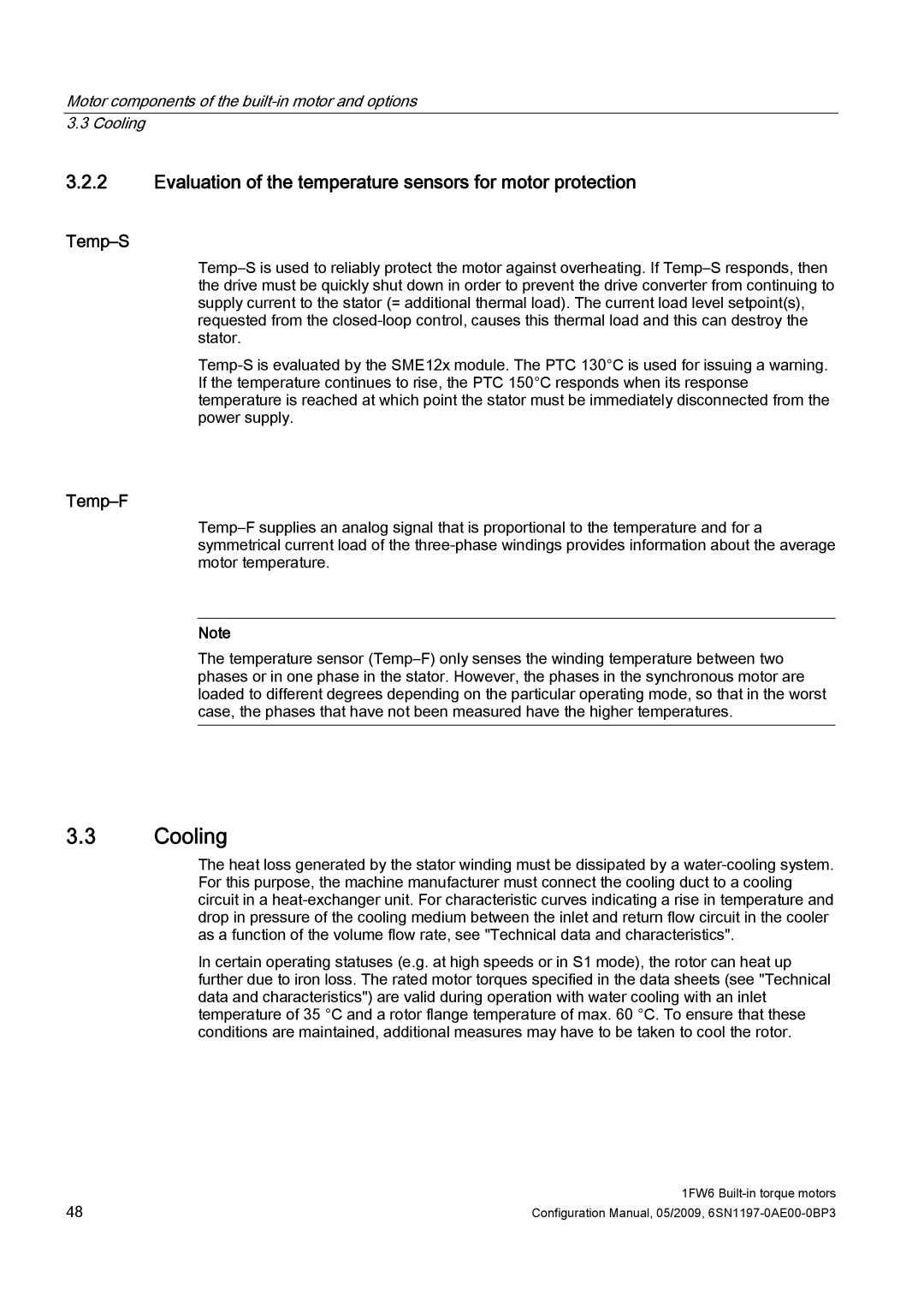
Motor components of the
3.2.2Evaluation of the temperature sensors for motor protection
Temp–S
Temp–F
Note
The temperature sensor
3.3Cooling
The heat loss generated by the stator winding must be dissipated by a
In certain operating statuses (e.g. at high speeds or in S1 mode), the rotor can heat up further due to iron loss. The rated motor torques specified in the data sheets (see "Technical data and characteristics") are valid during operation with water cooling with an inlet temperature of 35 °C and a rotor flange temperature of max. 60 °C. To ensure that these conditions are maintained, additional measures may have to be taken to cool the rotor.
48 | 1FW6 |
Configuration Manual, 05/2009, |
